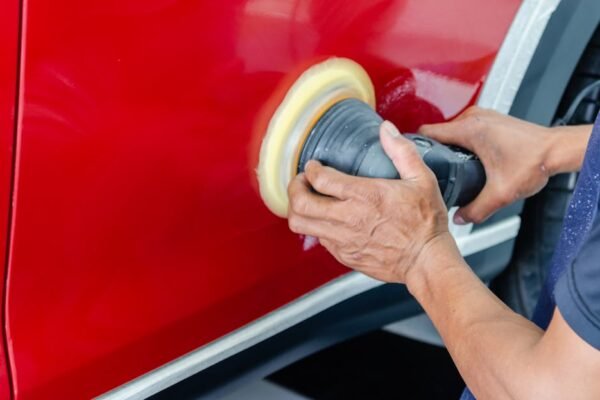Introduction to Vehicle Connectivity
{“type”:”img1″,”src”:”https://mostmotors.com/wp-content/uploads/2024/03/fileUpload-9.jpg”,”alt”:”modern cars technology”}As we surge into the future, the relationship between vehicles and technology continues to evolve, redefining the driving experience. Vehicle connectivity technology is at the forefront, offering unprecedented levels of convenience, safety, and efficiency. This technology allows vehicles to communicate with the driver, other cars, road infrastructure, and even the Internet, paving the way for advancements like autonomous driving and smart city integration.
The recent years have seen significant strides in connectivity technologies, driven by the rapid development of Internet of Things (IoT) devices, 5G networks, and cloud computing. These technologies have enabled cars to become more than just a means of transportation; they're now smart mobility solutions capable of receiving real-time traffic updates, adjusting routes based on road conditions, and providing personalized in-car experiences.
Understanding the current landscape and emerging trends in vehicle connectivity is essential for industry stakeholders, technology enthusiasts, and consumers alike. This blog post explores the latest trends in vehicle connectivity technology, highlighting the challenges and opportunities they present.
The evolution of vehicle connectivity technology encompasses several key areas, including telematics, Vehicle to Everything (V2X) communication, and in-vehicle infotainment systems. Together, these advancements signify a shift towards more connected and intelligent vehicles, setting the stage for the next revolution in mobility.
Let's delve into these cutting-edge trends, examining how they're shaping the future of transportation and what we can expect in the coming years.
The Rise of Telematics
Telematics, a blend of telecommunications and informatics, is at the heart of vehicle connectivity. This technology has vastly improved vehicle safety, efficiency, and convenience by providing real-time data on vehicle operation and performance. From GPS navigation to emergency roadside assistance, telematics services have become indispensable in today's connected vehicles.
The application of telematics goes beyond traditional GPS tracking and fleet management. Advanced telematics systems now offer diagnostics information, predictive maintenance alerts, and even insurance telematics, which uses driving behavior data to personalize insurance premiums. These developments have not only enhanced the driving experience but have also opened up new avenues for value-added services.
With the advent of 5G technology, telematics is set to reach new heights. High-speed, low-latency 5G networks will enable more sophisticated telematics applications, including real-time vehicle-to-vehicle (V2V) and vehicle-to-infrastructure (V2I) communications. These advancements will facilitate smoother traffic flows, reduce congestion, and improve overall road safety.
Despite the benefits, the integration of telematics poses challenges, particularly concerning data privacy and security. As vehicles become more connected, they're also more vulnerable to cyberattacks. Therefore, robust cybersecurity measures are critical to safeguarding personal and vehicle data.
Looking ahead, telematics will continue to be a pivotal technology in advancing vehicle connectivity, with innovations such as autonomous driving and connected vehicle ecosystems on the horizon. Its role in transforming transportation into a more efficient, safer, and personalized experience cannot be overstated.
Vehicle to Everything (V2X) Communication
{“type”:”img1″,”src”:”https://mostmotors.com/wp-content/uploads/2024/03/fileUpload-10.jpg”,”alt”:”vehicle communication systems”}Vehicle to Everything (V2X) communication is a groundbreaking technology that enables vehicles to communicate with each other and with road infrastructure. This technology is crucial for the development of autonomous vehicles and intelligent transportation systems. By allowing vehicles to share information about their speed, direction, and other vital data, V2X can prevent accidents, manage traffic flows, and enhance road safety.
V2X communication is comprised of several components, including Vehicle to Vehicle (V2V), Vehicle to Infrastructure (V2I), and Vehicle to Pedestrian (V2P) communication. Each of these plays a vital role in creating a cohesive and safe traffic environment. For instance, V2V communication can alert drivers about potential collisions, while V2I can provide real-time traffic signal and road condition information.
The implementation of V2X communication is being accelerated by the deployment of 5G networks and dedicated short-range communications (DSRC) technology. 5G, with its high data speeds and low latency, is particularly well-suited for supporting the real-time data transmission requirements of V2X communication. Meanwhile, DSRC offers a reliable and secure channel for V2X messages, ensuring that critical safety information is transmitted without delay.
Despite its potential, V2X adoption faces hurdles, including the need for widespread infrastructure development and the establishment of universal standards. Additionally, there are concerns about interoperability between different manufacturers' systems and the potential for information overload for drivers.
As these challenges are addressed, V2X communication is poised to become a cornerstone of future transportation systems, enabling safer, more efficient, and autonomous driving experiences.
In-Vehicle Infotainment Systems
In-vehicle infotainment systems have transformed the in-car experience, merging entertainment, information, and connectivity into a single platform. Tod...





